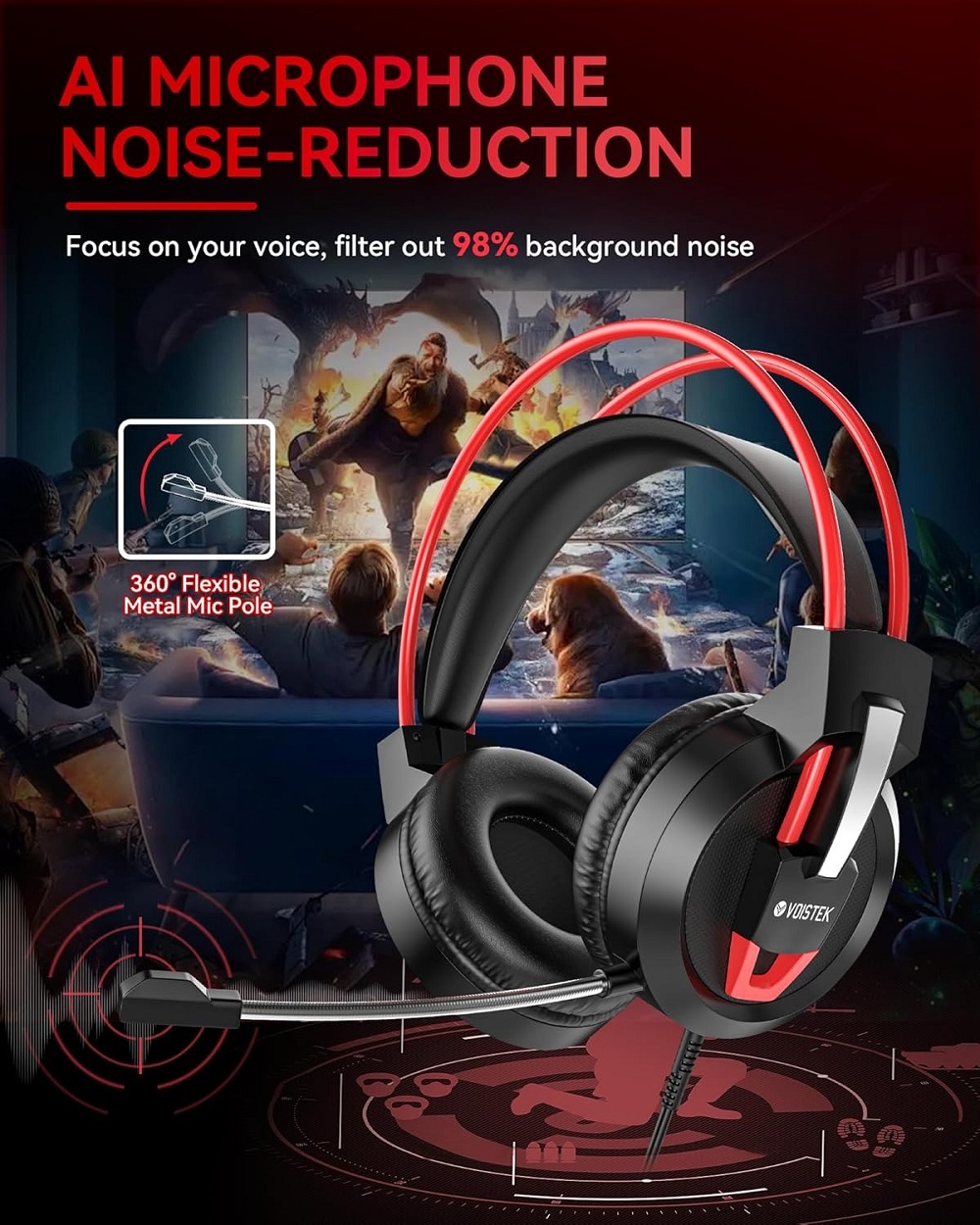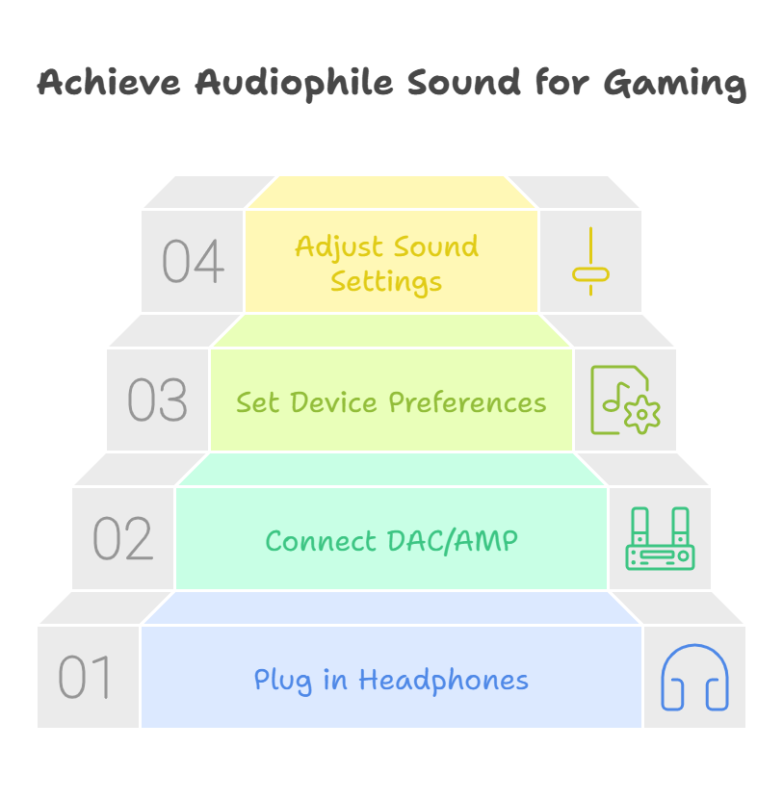Audiophile Headphones: 5 Ways to Dominate Gaming with God-Tier Audio

Ever get that feeling, like, they hear something you don’t? Like your opponents have some secret audio cheat code you haven’t unlocked? You’re not crazy. In the heat of online battles, sound isn’t just background noise – it’s your radar, your secret weapon, the difference between being the hunter and the hunted. If you’re tired of those “wait, where did that come from?!” moments and you’re ready to actually hear your way to victory, then stick with us. We’re diving headfirst into the world of audiophile headphones for competitive gaming.
Forget those typical “gaming headsets” that pump out muddy bass and tinny highs. We’re talking about high-fidelity sound that lets you pinpoint where an enemy’s footsteps are coming from with insane accuracy. You’ll anticipate every grenade toss, and you’ll experience your games with a level of “wow, I never heard that before!” Ready to say goodbye to that audio disadvantage and finally hear what you’ve been missing? Awesome, let’s do this.
Table of Contents
Why Audiophile Headphones? What’s the Real Deal?
Okay, you might be thinking, “Audiophile headphones? Aren’t those for, like, really serious music lovers who nitpick about every tiny sound?” And yeah, they’re killer for that. But guess what? That same incredible detail, clarity, and the way they place sounds? That translates directly into a huge advantage when you’re locked in a competitive match.
Think about it: those regular gaming headsets often crank up the bass to make explosions sound cool. But that can actually make everything else sound muffled, especially those quieter sounds like footsteps or distant shots. Audiophile headphones, though? They aim for a natural and spot-on sound. That means you hear everything as it should be, super clear and with everything in its own space. It’s like going from watching a fuzzy old TV to seeing everything in crisp, high-def.
Here’s why it makes a massive difference when you’re gaming:
- Pinpoint Accuracy, for Real: Imagine hearing an enemy sneaking through the grass exactly to your left, not just somewhere kind of on your left. Audiophile headphones, especially the open-back ones (we’ll get there!), are amazing at creating a wide and detailed sound picture. This lets you pinpoint exactly where sounds are coming from.
- Your Own Early Warning System: That faint sound of someone reloading just around the corner? The tiny thwip of a sniper shot far away? With headphones that pick up more detail, you’ll hear these things sooner. That gives you extra seconds to react – and in gaming, those seconds are everything.
- A Real Edge, No Doubt: Look, skill still matters, but having way better sound gives you a real advantage. You’ll make smarter moves because you’re hearing things you just couldn’t before.

Cracking the Code: What Audio Stuff Actually Helps You Win?
Let’s break down some of the tech talk, but we’ll keep it simple and focus on what really helps you in the game:
Soundstage and Imaging: Your Winning Combo
Think of these as your power-up. Soundstage is how wide and deep the sound around you feels. A wider soundstage means it’s easier to tell if a sound is coming from your left, right, in front, or behind you. It’s like the size of the sound bubble around your head.
Imaging, on the other hand, is how well you can pinpoint specific sounds within that soundstage. Great imaging lets you know exactly where that enemy’s footsteps are, the precise direction of gunfire – you get the idea. For competitive gaming, these two are key. You want headphones that create a realistic sound world where you can easily place every sound.
Open-Back vs. Closed-Back: Let’s See What’s What
This is a big topic in the headphone world, and it matters for gaming too.
- Open-Back Headphones: These have an open back on the earcups, letting air move freely. This usually gives you a wider and more natural sound, often described as “open” or “spacious.” Imaging is usually top-notch too. The catch? Sound leaks out – everyone nearby will hear your game, and they don’t block out much outside noise. Imagine having tiny speakers strapped to your ears.
- Closed-Back Headphones: These are sealed up tight, so sound doesn’t leak in or out. This is awesome for blocking distractions and keeping your game sounds private. However, the sound might not feel as wide as with open-backs, and sometimes it can feel more “inside your head.”
So, which is best for your gaming? If you really want that competitive edge, open-back headphones often win because of their wider sound and better imaging. Being able to pinpoint enemy positions is a huge deal. But, if you game where it’s noisy or you need to be quiet for others, good closed-back headphones are a solid choice. The tech keeps getting better, and some closed-backs have surprisingly good soundstage these days.
Frequency Response: Hearing Everything That Matters
Frequency response is the range of sounds a headphone can make, measured in Hertz (Hz). Humans hear from about 20 Hz to 20,000 Hz. While a wide range is good for overall sound, for gaming, we care most about clear and balanced sound, especially in the middle and high ranges where those important clues are hiding. You don’t want super-boosted bass messing with the details.
Getting Geared Up: What Do You Actually Need?
Okay, you’re convinced. But what gear do you actually need to make this happen?
The Best Audiophile Headphones Themselves: Our Top Picks for You
Here are a few examples at different price points, all great for competitive gaming:
| Brand & Model | Type | What Makes Them Great for Gaming | Ballpark Price |
|---|---|---|---|
| Sennheiser HD 560S | Open-Back | Amazing soundstage and imaging, sounds natural, comfy to wear | \$200 |
| Beyerdynamic TYGR 300 R | Open-Back | Really good for gaming, punchy bass without losing detail, good at placing sounds | \$200 |
| Drop + Sennheiser PC38X | Open-Back | Made with Drop, awesome sound and a good mic built-in for talking to your team | \$170 |
| Beyerdynamic DT 770 Pro (80 Ohm) | Closed-Back | Blocks out noise really well, detailed sound, comfy, good value for the money | \$160 |
| Audeze LCD-GX | Open-Back | Top-tier sound with planar magnetic drivers, super detailed, has a built-in mic | \$900 |
Just a heads-up: prices can change a bit.
The DAC/AMP: Giving Your Headphones a Boost
While your audiophile headphones will often work just fine plugged into your computer or controller, a separate DAC (Digital-to-Analog Converter) and AMP (Amplifier) can seriously boost your sound.
- DAC: Your computer and console have DACs inside, but external ones are usually better. They make the digital sound your computer understand into the analog sound your headphones can play. Think of it as making the sound clearer.
- AMP: An amplifier gives your headphones the power they need, especially if they need more juice (we call that higher impedance). This makes them sound louder, clearer, and more alive.
Do you really need one? It kind of depends on your headphones. If your headphones don’t need a lot of power (usually below 50 ohms), your PC or console might be enough. But if they need more power, an amp is a game-changer. Even if your headphones don’t need a ton of power, a good DAC can still make the sound better.
Good DAC/AMP Combos for Gaming:
- Schiit Fulla E: Small and doesn’t cost a fortune, a great way to start.
- Creative Sound BlasterX G6: Made specifically for gaming, with cool features like virtual surround sound.
- FiiO K5 Pro ESS: More powerful, for headphones that need extra oomph.
Setting It All Up: Let’s Get You Hearing Like a Pro
Setting up your audiophile headphones for gaming is usually pretty easy:
- Plug in your headphones: Most use a standard 3.5mm jack. Plug them into your PC or controller (you might need a little adapter for some controllers).
- Think about a DAC/AMP: If you get one, plug it into your computer with a USB cable. Then, plug your headphones into the DAC/AMP.
- Tell your computer or console: Make sure your computer or console knows to use your new headphones (or DAC/AMP) for sound.
- Play with the sound settings: Some games or sound software let you tweak the sound with an equalizer (EQ). You might want to adjust it a bit, but usually, keeping it balanced is best for competitive gaming.

Pro Tips to Get the Most Out of Your Sound
- Get to know your game’s sound settings: Spend some time in the audio menus of your favorite games. Adjust the volume of different sounds (like footsteps, gunshots, background noise) to what works best for you. Sometimes turning down the music helps you focus on the important stuff.
- Really listen: Don’t just hear the sounds; try to figure out exactly where they’re coming from. The more you practice, the better you’ll get.
- Talk to other audio fans: Headphone and audio forums (like Head-Fi) are full of helpful people. Read reviews, ask questions, and learn from what others have experienced.
RELATED POSTS:
- 📖 The Ultimate Guide to Choosing the Best USB Headphones with Mics for PC Users
- 📖 Top 7 Reasons to Buy Refurbished Business Headsets for Sale Today
- 📖 Headphone Amplifier: Unlock 10X Richer Sound with This Definitive Guide!
Level Up Your Game, Level Up Your Ears!
Getting audiophile headphones for competitive gaming isn’t just about having fancy gear. It’s about getting a real advantage. The clearer sound and the ability to pinpoint sounds can seriously help you react faster, make smarter decisions, and win more. So, say goodbye to muddy audio, open your ears to a whole new level of sound, and get ready to dominate. You’ll be blown away by what you’ve been missing.
Ready for god-tier audio? Get expert advice on the best gear for you!
